
The Well-Gardened Mind - Webinar With Sue Stuart-Smith 3/27/2021
Remembering the one-year mark of the pandemic and in celebration of National Horticultural Therapy Week, please join the Mid-Atlantic …


El inglés es el idioma de control de esta página. En la medida en que haya algún conflicto entre la traducción al inglés y la traducción, el inglés prevalece.
Al hacer clic en el enlace de traducción se activa un servicio de traducción gratuito para convertir la página al español. Al igual que con cualquier traducción por Internet, la conversión no es sensible al contexto y puede que no traduzca el texto en su significado original. NC State Extension no garantiza la exactitud del texto traducido. Por favor, tenga en cuenta que algunas aplicaciones y/o servicios pueden no funcionar como se espera cuando se traducen.
Inglês é o idioma de controle desta página. Na medida que haja algum conflito entre o texto original em Inglês e a tradução, o Inglês prevalece.
Ao clicar no link de tradução, um serviço gratuito de tradução será ativado para converter a página para o Português. Como em qualquer tradução pela internet, a conversão não é sensivel ao contexto e pode não ocorrer a tradução para o significado orginal. O serviço de Extensão da Carolina do Norte (NC State Extension) não garante a exatidão do texto traduzido. Por favor, observe que algumas funções ou serviços podem não funcionar como esperado após a tradução.
English is the controlling language of this page. To the extent there is any conflict between the English text and the translation, English controls.
Clicking on the translation link activates a free translation service to convert the page to Spanish. As with any Internet translation, the conversion is not context-sensitive and may not translate the text to its original meaning. NC State Extension does not guarantee the accuracy of the translated text. Please note that some applications and/or services may not function as expected when translated.
Collapse ▲
Remembering the one-year mark of the pandemic and in celebration of National Horticultural Therapy Week, please join the Mid-Atlantic …
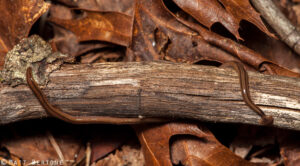
PLEASE NOTE: NC State University and local agencies (e.g. NCDA&CS) are not currently tracking species that are already known to exist …

John Murphy, Educational Director at Bullington Gardens takes us on a virtual tour of their Therapeutic Horticulture programs. In this …
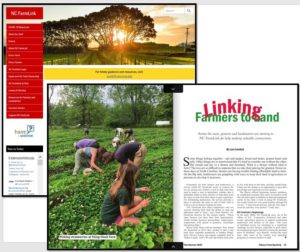
NC FarmLink was recently featured in Tobacco Farm Quarterly. In the article, found on page 18, journalist, Lara Ivanitch …

Check out this 15 minute video summary by Economist Dr. Charlie Hall on the economic, environmental, and health and …
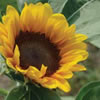
Need answers to floriculture, vegetable, fruit, or weed questions? The Department of Horticultural Science invites you to try their powerful, but focused …

Join Dr. Lucy Bradley for a 15 min introduction to some of the ways that NC State Extension is …

World-renowned Horticultural Economist Charlie Hall has assembled a wealth of research on the economic, environmental, health, and well-being benefits of …
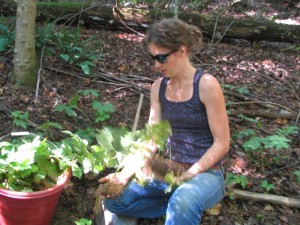
We often receive questions on how to grow Bloodroot. Margaret and Alison, with the NC Alternative Crops and Organics …
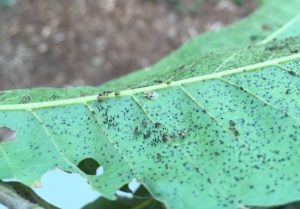
This week I have seen a couple species of lace bugs active on landscape plants. Yes, there are over …

For the past several weeks I have noticed damage to the leaves of my roses. Each year this happens and …

False oleander scale, Pseudaulacaspis cockerelli, is a tropical and subtropical pest originally from China. False oleander scale is common throughout …

Imported willow leaf beetle (Plagiodera versicolor) are common on willows in landscapes and natural areas. Most of year adults and …
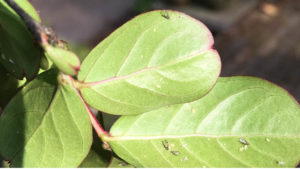
Crape myrtles are among the most commonly planted trees in the Southeast. The two main pests are crape myrtle …

As part of the Coronavirus Farm Assistance Program, the U.S. Department of Agriculture (USDA) announced that it will provide up …
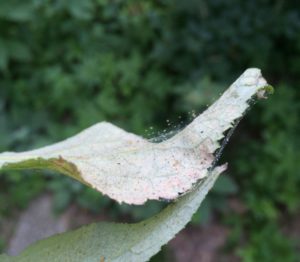
Twospotted spider mites are probably the most common spider mite species to damage ornamental plants, fruits, vegetables, and others. Twospotted …
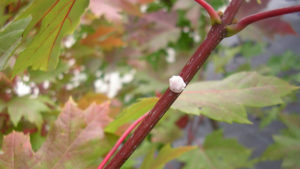
There are a couple species of wax scales (Ceroplastes spp.) in North Carolina. Common ones include Indian wax scale …
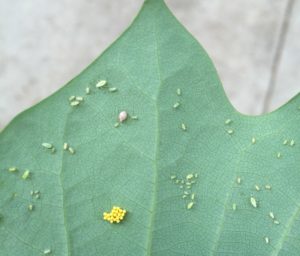
Tulip trees (Liriodendron tulipifera) have two primary pests both of which produce honeydew and both of which are actively …
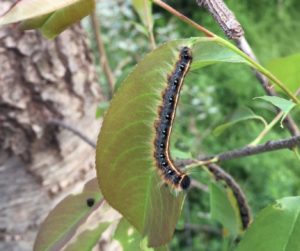
Eastern tent caterpillars are common native insects that create silk webs or ‘tents’ in the branch crotches of some …
This publication, targeted to vegetable growers in North Carolina, Virginia, and other states in the …
This muscadine grape production guide will help the increasing number of North Carolina farmers who …
Before installing a dual-purpose subsurface drainage and subirrigation system on your farm, have your site …
This publication provides guidelines and recommendations for proper irrigation scheduling of wastewater.

This factsheet describes Orangestriped oakworms, which are often noticed crawling about in August and September

This field guide and linked resources provide information on basic insect identification, sampling methods, monitoring, …
Vineyard establishment involves careful planning, thorough site preparation, vineyard design, planting, and trellis construction. Unlike …
Growing Chardonnay grapes, the number one vinifera variety grown in North Carolina, can be a …